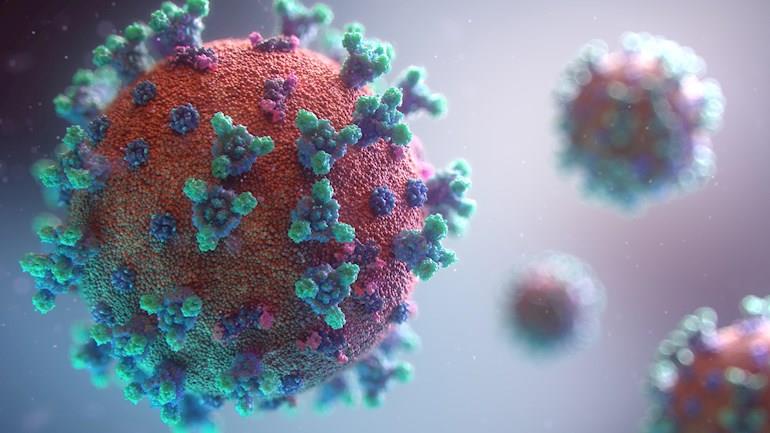APRIL 9, 2020
Sudden loss of smell as a possible symptom of COVID-19, coagulopathy and antiphospholipid antibodies in patients with COVID-19, and characteristics of patients with fatal COVID-19
By Denise Baez
NEW YORK -- April 9, 2020 -- In today’s DG Alert, we cover sudden olfactory loss function as a possible symptom of coronavirus disease 2019 (COVID-19), coagulopathy and antiphospholipid antibodies in patients with COVID-19, and characteristics of patients with fatal COVID-19.
According to a case report published in JAMA Otolaryngology - Head & Neck Surgery, the association of a sudden and complete olfactory function loss, without nasal obstruction in a patient with other symptoms, such as cough or fever, should alert a clinician to suspect severe acute respiratory syndrome coronavirus 2 (SARS-CoV-2).
Michael Eliezer, MD, Lariboisière University Hospital, Paris, France, and colleagues describe a case where the main symptom expressed by the patient infected by SARS-CoV-2 was the sudden and complete loss of the olfactory function without nasal obstruction.
The woman, in her 40s, was unable to detect any of the 5 odorants commonly used to test human olfaction: phenyl-ethyl-alcohol (flower rose), cyclotene (caramel), isovaleric acid (goat cheese), undecalactone (fruits), and skatole (manure).
A few days before presentation, she experienced a dry cough associated with cephalalgia and myalgia. She had no fever or rhinorrhoea. The otoscopic and anterior rhinoscopic examination results (without endoscopic examination) were normal. A CT scan of the nasal cavity showed bilateral inflammatory obstruction of the olfactory clefts that was confirmed on MRI of the nasal cavity. There were no anomalies of the olfactory bulbs and tracts. Because her husband was also suspected to be infected with SARS-CoV-2, the patient underwent real-time reverse transcriptase polymerase chain reaction (RT-PCR) for SARS-CoV-2, which yielded positive results.
“To our knowledge, this is the first report of a patient with COVID-19 presenting essentially with an olfactory function loss,” the authors wrote.
Another case study, published in The New England Journal of Medicine, describes 3 patients hospitalised with laboratory-confirmed COVID-19 and clinically significant coagulopathy, antiphospholipid antibodies, and multiple infarcts.
The first patient was a man aged 69 years with a history of hypertension, diabetes, and stroke. He presented with fever, cough, dyspnoea, diarrhoea, and headache. On January 25, 2020, RT-PCR testing for SARS-CoV-2 was positive. The initial treatment was supportive; however, the illness subsequently progressed to hypoxemic respiratory failure warranting the initiation of invasive mechanical ventilation. On examination, the patient had evidence of ischaemia in the lower limbs bilaterally as well as in digits 2 and 3 of the left hand. Brain CT showed bilateral cerebral infarcts in multiple vascular territories. Subsequent serologic testing showed the presence of anticardiolipin IgA antibodies as well as anti-β2-glycoprotein I IgA and IgG antibodies.
Two other patients with similar findings were seen at the specialised intensive care unit for patients with COVID-19 at Tongji Hospital, Wuhan, China. Serologic tests in these patients were positive for anticardiolipin IgA antibodies as well as anti-β2-glycoprotein I IgA, and IgG antibodies.
Lupus anticoagulant was not detected in any of the patients, although testing was performed while the patients were acutely ill.
“Antiphospholipid antibodies abnormally target phospholipid proteins, and the presence of these antibodies is central to the diagnosis of the antiphospholipid syndrome,” the authors wrote. “However, these antibodies can also arise transiently in patients with critical illness and various infections. The presence of these antibodies may rarely lead to thrombotic events that are difficult to differentiate from other causes of multifocal thrombosis in critically patients, such as disseminated intravascular coagulation, heparin-induced thrombocytopenia, and thrombotic microangiopathy.”
Lastly, a case study, published in the American Journal of Respiratory and Critical Care Medicine, of 85 patients with COVID-19 who died in Wuhan in the early stages of the coronavirus pandemic showed that most (72.9%) were male, most (89.3%) were aged older than 50 years, had ≥1 underlying conditions, and most (81.2%) had very low counts of eosinophils.
All patients died between January 9, 2020, and February 15, 2020. The majority of patients died from multiple organ failure.
The most common symptoms were fever (83%), cough (82%), dyspnoea (31%), and muscle ache (11%). The most common comorbidities were hypertension, diabetes, and coronary heart disease. Of the patients, 90.6% received antibiotics, 91.8% received an antiviral, 76.5% received glucocorticoids, 44.7% received intravenous immunoglobulin, and 38.8% received interferon α2b.
Complications included respiratory failure (94.1%), shock (81.2%), acute respiratory distress syndrome (74.1%), and arrhythmia (60%), among others.
“We found that the absolute eosinophil count in peripheral blood was reduced in almost all patients who died,” wrote Yingzhen Du, Chinese PLA General Hospital, Beijing, China, and colleagues. “We thus speculate that eosinophilopenia may be used as a prognostic indicator for patients with COVID-19. In addition, the ratio of neutrophil to eosinophil counts may be another measure which can minimise variability in absolute eosinophil counts from different hospitals. Another laboratory abnormality found in this study was decreased total lymphocytes, which is consistent with the conclusions of existing research indicating that lymphocytopenia is more often seen in non-survivors of SARS-CoV-2 infection. It is hoped that this [study] will have value in helping clinicians identify patients with poor prognosis at an early stage by being aware of some of the alarming clinical characteristics presented by patients before they died from COVID-19, and help guide appropriate and effective management for future patients.”
Reference: jamanetwork.com/journals/ja...
SOURCE: JAMA Otolaryngology - Head & Neck Surgery, The New England Journal of Medicine, and the American Journal of Respiratory and Critical Care Medicine
